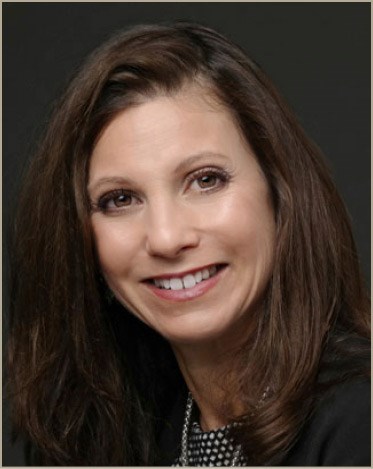Setting Yourself Up to Be a Commodity? What’s Your Edge?
Whether good times or bad, we should all heed Alexa Von Tobel’s advice about staying close to our customers. As more organizations try to keep up with the latest tech trend and increase their focus on digital channels, human to human contact is on the verge of extinction. In fact, according to a report by PwC, a staggering 59% of consumers feel that companies have lost touch with the human element of the customer experience. A significant part of customer experience is about increasing human contact between your brand, your company, and your customers.
#customerfocus

By Laura Patterson
President and Co-Founder
VisionEdge Marketing, Inc.
Podcast: Play in new window | Download (Duration: 5:50 — 3.9MB)
In this episode of What’s Your Edge, we’re going to explore whether your customer service is helping you avoid becoming a commodity.
When I was a young girl, no matter what part of town we were in, my mom always went to the same service station for gas. In those days, service stations had service attendants who put gas in your tank, checked your oil and tires, made sure you had antifreeze in the winter and solution for your windshield wipers. I asked her once why we always went to this specific gas station. Her answer was simple. She said, “I trust them to make sure the car is in good working order. They make sure we’re safe.” Once service attendants were no longer employed my mom no longer seemed choosy about where we stopped for gas. There were stations on nearly every corner and she picked the one with the cheapest price and easiest to pull into. Whether planned or not, by removing the service attendants from the gas station the company had cut the connection to the customer. As a result, they began the quick slide to becoming a commodity.
Not long ago I had the privilege of serving on a panel for an ISBM townhall meeting on this very topic of retaining customer connections. During this townhall, we were all figuring out how to connect remotely whether for work or learning. As part of the discussion, several people mentioned how they were automating various experiences, such as factory tours. As I listened to how people were automating their customer processes, the gas station story popped into my head. I wondered how many of these companies were setting themselves up to eventually becoming a commodity.
Stay Close to Your Customers
Whether good times or bad, we should all heed Alexa Von Tobel’s advice about staying close to our customers. As more and more organizations try to keep up with the latest tech trend and increase their focus on digital channels, human to human contact is on the verge of extinction. In fact, according to a report by PwC, a staggering 59% of consumers feel that companies have lost touch with the human element of the customer experience. A significant part of customer experience is about increasing human contact between your brand, your company, and your customers.

Studies suggest that no matter what the channel, people want to know there is a real person on the other end. Someone who can assist them properly. That same PwC report found that people want more human contact in the future, not less. 75% of all consumers want technology to be used primarily as a method of facilitating human communication. In a survey about improving business processes, the improvement customers requested the most was better human service. This is particularly important when a customer has a complaint or query that needs to be dealt with.
Joey Coleman, a customer experience expert, claims that customer experience is “the last great differentiator.” Why? Because price and product can be imitated. Unlike price and product which can be copied, every company can individually design its customer experience. Ron Kaufman another customer service expert, believes that service is the “DNA” that permeates everything a company does and ultimately determines whether your organization becomes a provider of choice. This means that customer experience and customer service are no longer merely support functions. Service especially has become a feature in its own right.
How to Make Customer Service Your Differentiator
We agree. If you want to create a competitive advantage and improve customer retention, then increase your focus on customer service. Leveraging customer service as a differentiator will require you to truly know your customers. Thinking back to my mom’s gas station, they knew her name and our names, they knew when they last checked all the car’s vitals and when it was last serviced. Remember, every customer interaction matters and serves as a moment of truth. These attendants used every interaction to demonstrate their expertise, build credibility and value. And they always went the extra mile. How well do you create value for your customers? Are you like the service station attendant and proactive in taking care of the customer and anticipating their needs?
The attendants clearly had a process for how they serviced the vehicle. Make sure you have well-defined customer service, support and success processes. Take the time to follow up after you resolve a service issue.
In the end, the key is to engage with your customers how they prefer and not what’s easiest for you.
Take care before your company moves to automate more services as a method of replacing human contact. In nearly every study this has actually shown to have a negative impact on customer experience. Do so at the risk of putting yourself at a competitive disadvantage. Avoid becoming a commodity. Use your technology to improve your productivity and the experience your customers have not to replace human interaction. Not sure whether your human interactions are measuring up? Let’s explore how you can find out.
Need more information?
Laura Patterson
President and Co-Founder
VisionEdge Marketing, Inc.
P.O. Box 342546
Austin, TX 78734
512-681-8800 x 12
www.visionedgemarketing.com
About the Author
Laura Patterson
Laura began her 25+ year career in sales and has worked across functions spanning customer relationship management, strategic and product marketing, analytics, and Marketing operations. She founded VisionEdge Marketing in 1999 and is recognized as one of the pioneers in MPM. She received a patent for the Accelance® methodology designed to connect activities and investment to business results. She has published four books, the most recent “Fast-Track Your Business: A Customer-Centric Approach to Accelerate Market Growth.” She speaks and facilitates workshops on alignment, accountability, analytics, and operational excellence best practices. Martechexec selected Laura as one of the top 50 women in marketing technology. She is among the Top 20 Women in Business according to the Sales Lead Management Association. Engagio identified Laura among the top Marketing Operations leaders to know.
RELATED CONTENT
-
Marketing: New World, New Rules — Experience is Everything
Experiences are memorable. Experiences build connections and breed associations. If you can give a customer a positive experience, they will remember you when they have a need — whether that is tomorrow or 12 months from now. Put 2020 back in order by adopting some new rules — and applying some fresh ideas.
-
Marketing for Manufacturers: Let Your Customers Be Your Marketers
Traditional marketing remains fundamental, but building a personality around its product, telling a story and considering the person behind the machine has helped this company gain a more vibrant and open reputation.
-
Key Takeaways from CMI’s 2022 B2B Content Marketing Research
The Content Marketing Institute’s 2022 Annual B2B Content Marketing Benchmarks, Budgets, and Trends Report gives an interesting insight into the new post-pandemic landscape. Here are the major takeaways.


